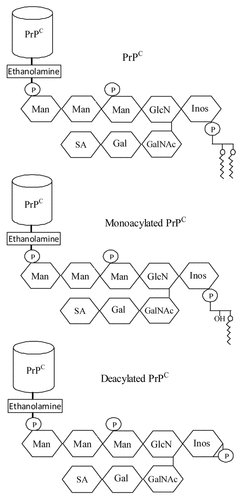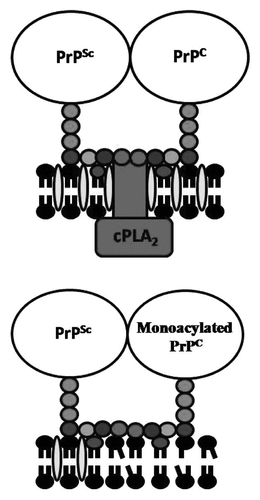Figures & data
Figure 1 Phospholipase digestion of PrPC affects the acylation of the GPI anchor. Cartoon showing the putative GPI anchor attached to PrPC, monoacylated PrPC and deacylated PrPC. Glycan residues shown include inositol (Inos), mannose (Man), sialic acid (SA), galactose (Gal), N-acetyl galactosamine (GalNAc) and glucosamine (GlcN) as well as phosphate (P).

Figure 2 Acylation of PrPC affects the underlying cell membrane. Cartoon showing the proposed membranes surrounding native PrPC and monoacylated PrPC, including cholesterol (), lyso-phospholipids (![]()

Figure 3 Monoacylated PrPC affects the capture of cPLA2 in PrPSc-containing lipid rafts. (A) Cartoon showing the proposed membranes surrounding PrPSc and PrPC including the capture of cPLA2 in lipid rafts that are dense in cholesterol (![]()
